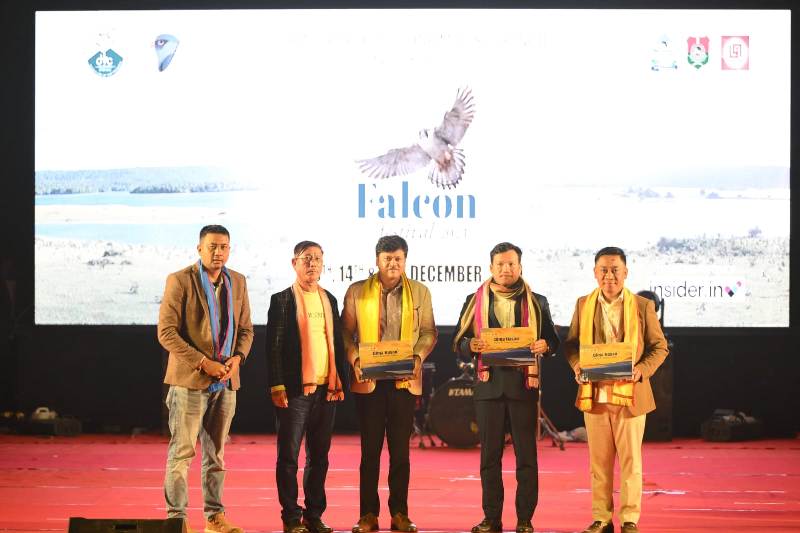Guwahati: The Dima Hasao Forest Division (West) and the biodiversity conservation organization Aaranyak have collaborated to bring out a coffee table book entitled “Dima Hasao: Explore the Wonders of Nature.”
The book was recently launched as part of the Falcon Festival at Umrangso in Dima Hasao.
The book offers a glimpse into the region’s biodiversity – from its diverse plant and animal life to the cultural practices that contribute to its long-term preservation.
A collaborative effort by experts has resulted in the first-ever book dedicated to Dima Hasao’s biodiversity.
Edited by Dr. M. Firoz Ahmed, Tuhin Langthasa, and Dr. Dipankar Lahkar, the book offers a comprehensive and accessible resource for understanding the region’s unique ecosystem.
The book covers the diversity of plants, orchids, edible insects, butterflies, fishes, reptiles and amphibians, birds and mammals.
The book contains information on 213 species of wild fauna and flora, including 59 species of birds, 41 species of mammals, 33 species of amphibians and reptiles, 22 species of fishes, 18 species of butterflies, 18 species of other insects, 22 species of orchids and some important trees and shrubs of Dima Hasao.
Each species was coded to emphasize the significance of the Dima Hasao’s ecosystem and natural history. The newly-described species from the district were also highlighted, along with all relevant information.
In addition, the book covers some natural history notes of the endemic, locally extirpated and extinct animals of Dima Hasao.
It also features some elements of indigenous people’s culture and way of life in harmony with nature in addition to information on traditional mythology surrounding Tortoise Lake, the contribution of Veer Demalik Kemprai and interesting facts about hornbills and amur falcons.
The book is a comprehensive guide to the region’s biodiversity, featuring detailed information and stunning visuals of each species.
Dr Anwaruddin Choudhury, Dr Bibhab Kumar Talukdar, Bijay Sankar Bora and Jayanta Kumar Pathak provided valued guidance as editorial advisors for the book. More than 50 photographers contributed photos for the book.
The book also included checklists of animals and plant species of Dima Hasao that might serve as a benchmark for scholars, environment enthusiasts and planners.
During the launch, NC Hills Autonomous Council CEM Debolal Gorlosa highlighted the long history of wildlife exploration in Dima Hasao, dating back to the colonial era and continuing with numerous new species discoveries.
He said the Assam government and the North Cachar Autonomous Council are committed to conserving all of its pristine bioresources.















